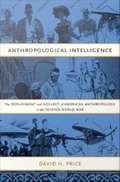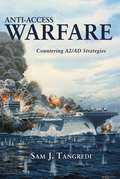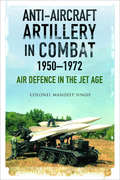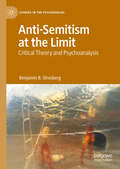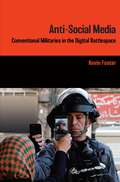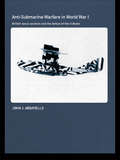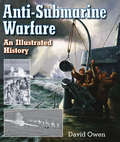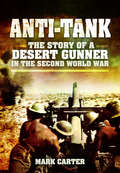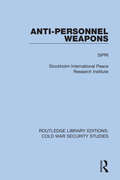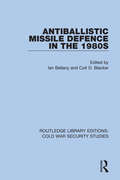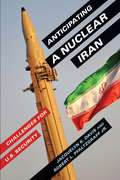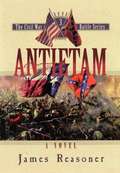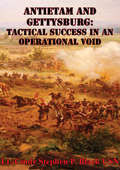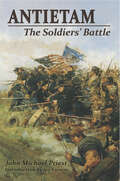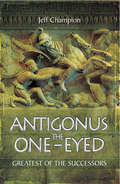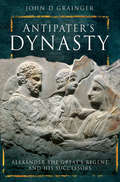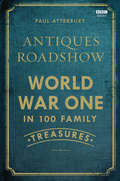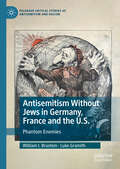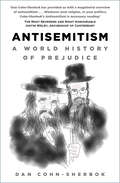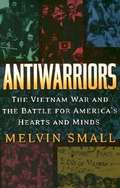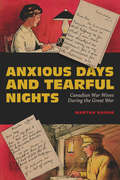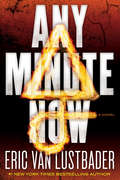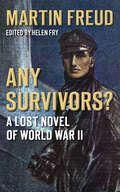- Table View
- List View
Anthropological Intelligence: The Deployment and Neglect of American Anthropology in the Second World War
by David H. PriceBy the time the United States officially entered World War II, more than half of American anthropologists were using their professional knowledge and skills to advance the war effort. The range of their war-related work was extraordinary. They helped gather military intelligence, pinpointed possible social weaknesses in enemy nations, and contributed to the army's regional Pocket Guide booklets. They worked for dozens of government agencies, including the Office of Strategic Services (OSS) and the Office of War Information. At a moment when social scientists are once again being asked to assist in military and intelligence work, David H. Price examines anthropologists' little-known contributions to the Second World War. Anthropological Intelligence is based on interviews with anthropologists as well as extensive archival research involving many Freedom of Information Act requests. Price looks at the role played by the two primary U. S. anthropological organizations, the American Anthropological Association and the Society for Applied Anthropology (which was formed in 1941), in facilitating the application of anthropological methods to the problems of war. He chronicles specific projects undertaken on behalf of government agencies, including an analysis of the social effects of postwar migration, the design and implementation of OSS counterinsurgency campaigns, and the study of Japanese social structures to help tailor American propaganda efforts. Price discusses anthropologists' work in internment camps, their collection of intelligence in Central and South America for the FBI's Special Intelligence Service, and their help forming foreign language programs to assist soldiers and intelligence agents. Evaluating the ethical implications of anthropological contributions to World War II, Price suggests that by the time the Cold War began, the profession had set a dangerous precedent regarding what it would be willing to do on behalf of the U. S. government.
Anti-Access Warfare
by Sam TangrediThe book is the definitive conceptual and historical introduction to the concept of anti-access strategies. Unlike current studies, it is not simply technology focused. Nor is it primarily intended as critique of the current Air-Sea Battle concept. It combines conceptual thinking with historical examples and potential scenarios in order to identify options for future defense planning.Strategies of "anti-access," also known as "area denial" (more recently combined into the awkward acronym "A2/AD") are presumed to be the primary threats to the employment of U.S. military forces in overseas crises. This presumption has gradually evolved into a joint concept of "operational access." Anti-access capabilities appear to be the current military posture of the People's Republic of China and Islamic Republic of Iran. The study of anti-access or area denial strategies for use against American power projection capabilities has strong naval roots-which have been largely ignored by the most influential commentators. In reality, denial of access was the Soviet Navy's operational objective during the Cold War. The first use of the actual anti-access term can be traced to a series of "anti-Navy" studies by the Office of Net Assessment designed to examine the ability of the U.S. Navy to carry out its Maritime Strategy and, later, "...From the Sea" strategic vision. Sustained long-range power projection is both a unique strength of U.S. military forces and a requirement for an activist foreign policy and forward defense. In more recent years, the logic of the anti-access approach has been identified by the Department of Defense as a threat to this U.S. capability and the joint force; countering it is one of the defense priorities identified in the President's directions issued this past January. In addition to potential regional powers, a number of think-tanks have suggested that non-state actors, such as terrorist organizations, are developing anti-access/area denial capabilities.The book's conclusions differ from most commentary on anti-access. Rather than a technology-driven post-Cold War phenomenon, the anti-access approach has been a routine element of grand strategy used by strategically weaker powers to confront stronger powers throughout history. But they have been largely unsuccessful when confronting a stronger maritime power. Although high technology weapons capabilities enhance the threat, they also can be used to mitigate the threat. Rather than arguing against reliance on maritime forces-presumably because they are no longer survivable-the historical analysis argues that maritime capabilities are key in "breaking the great walls."
Anti-Aircraft Artillery in Combat, 1950–1972: Air Defence in the Jet Age
by Colonel Mandeep SinghAn in-depth look at the combat performance of ground-based air defenses during the Korean War, Vietnam War, Middle East conflicts, and other campaigns. Though anti-aircraft artillery was extensively used in combat in the First World War, it wasn&’t until World War II that it came into prominence, shooting down more aircraft than any other weapon and seriously degrading the conduct of air operations. In the battle between the attackers and anti-aircraft artillery, the latter had the upper hand when the war ended. The post-war years saw a decline in anti-aircraft artillery as peace prevailed, and the advent of the jet aircraft seemed to tilt the balance in favor of the aircraft as they flew faster and higher, seemingly beyond the reach of anti-aircraft artillery. It would take all the hi-tech equipment and the guile and cunning that anti-aircraft artillery could muster to try and reclaim pole position. It is that story, of the tug of war between the aircraft and artillery, that forms the narrative of this book—as it traces the history of combat employment of anti-aircraft artillery from the Korean War, in effect the first Jet Age war, to the War of Attrition between Arab states and Israel when the missiles came of age, sending the aircraft scurrying for cover. Mandeep Singh&’s book is the first attempt to look at the performance of anti-aircraft artillery, incorporating the views, analyses and experiences of Soviet, Arab and South Asian Armies through the major wars between 1950 and 1972.
Anti-Semitism at the Limit: Critical Theory and Psychoanalysis (Studies in the Psychosocial)
by Benjamin B. StrosbergIn this book, Benjamin Strosberg explores difficulties and anxieties inherent in studying, defining, and defending against anti-Semitism by tracing a concurrent difficulty in thinking about Jewishness, which has historically served as a limit case for central social categories such as outsider, religion, race, gender, and nation. Dr. Strosberg draws on Zygmunt Bauman’s concept of proteophobia—the anxious fear of what doesn’t fit into clear-cut categories—to think more carefully about anti-Semitism as response to the complex-realities of ambivalence and otherness. The book proposes ‘negative psychology’ as a methodology for studying anti-Semitism and proteophobia rooted in psychoanalysis and Theodor Adorno’s Critical Theory. Drawing from lived experiences, contemporary events, and debates in the field, this compelling work explores the broad implications of the investigation of anti-Semitism for politics, education, and psychoanalysis, as well as the specific implications for Jewish identity and resistance.
Anti-Social Media: Conventional Militaries in the Digital Battlespace
by Kevin FosterOver the past decade the gravitational centre of contemporary conflict has shifted from the physical battlefield to the online battlespace, where the ingenuity of non-state actors has vexed governments and tested their militaries. Devising new architectures of participation, Al Qaeda and ISIS have weaponised social media and empowered their dispersed followers to organise, communicate and dominate the information domain. Kevin Foster shows how conventional militaries in the US, Britain, Israel and Australia have responded to this challenge by integrating social media into their systems and operations, and the organisational and cultural impediments they have confronted. Foster traces each military's social media journey, appraising the strategies, doctrine and policies developed to regulate its management and use. From the ADFA Skype sex scandal to the IDF's sophisticated integration of the real and virtual spaces of war, Anti-Social Media examines the good, the bad and the indifferent in the armed forces' halting advance towards social media competence.
Anti-Submarine Warfare in World War I: British Naval Aviation and the Defeat of the U-Boats (Cass Series: Naval Policy and History)
by John AbbatielloInvestigating the employment of British aircraft against German submarines during the final years of the First World War, this new book places anti-submarine campaigns from the air in the wider history of the First World War. The Royal Naval Air Service invested heavily in aircraft of all types—aeroplanes, seaplanes, airships, and kite balloons—in order to counter the German U-boats. Under the Royal Air Force, the air campaign against U-boats continued uninterrupted. Aircraft bombed German U-boat bases in Flanders, conducted area and ‘hunting’ patrols around the coasts of Britain, and escorted merchant convoys to safety. Despite the fact that aircraft acting alone destroyed only one U-boat during the war, the overall contribution of naval aviation to foiling U-boat attacks was significant. Only five merchant vessels succumbed to submarine attack when convoyed by a combined air and surface escort during World War I. This book examines aircraft and weapons technology, aircrew training, and the aircraft production issues that shaped this campaign. Then, a close examination of anti-submarine operations—bombing, patrols, and escort—yields a significantly different judgment from existing interpretations of these operations. This study is the first to take an objective look at the writing and publication of the naval and air official histories as they told the story of naval aviation during the Great War. The author also examines the German view of aircraft effectiveness, through German actions, prisoner interrogations, official histories, and memoirs, to provide a comparative judgment. The conclusion closes with a brief narrative of post-war air anti-submarine developments and a summary of findings. Overall, the author concludes that despite the challenges of organization, training, and production the employment of aircraft against U-boats was largely successful during the Great War. This book will be of interest to historians of naval and air power history, as well as students of World War I and military history in general.
Anti-Submarine Warfare: An Illustrated History
by David OwenA deep dive into the tactics and technology used to defend against submarines—from the opening of the First World War through World War II and beyond. The submarine was undoubtedly the most potent purely naval weapon of the twentieth century. In two world wars, enemy underwater campaigns were very nearly successful in thwarting Allied hopes of victory—indeed, annihilation of Japanese shipping by US Navy submarines is an indicator of what might have been. That the submarine was usually defeated is a hugely important story in naval history, yet this is the first book to treat the subject as a whole in a readable and accessible manner. It concerns individual heroism and devotion to duty, but also ingenuity, technical advances and originality of tactical thought. What developed was an endless battle between forces above and below the surface, where a successful innovation by one side eventually produces a countermeasure by the other in a lethal struggle for supremacy. Development was not a straight line: wrong ideas and assumptions led to defeat and disaster. &“Iconography (with dozens of photographs and often large-format diagrams), a vast bibliography and a complete and documented general approach make this volume a work of great quality and of great interest for all enthusiasts and scholars of this very interesting subject.&”—Storia Militare &“The modeller will not only find the text engaging but there is a superb collection of photographs and illustrations which of course include submarines, corvettes and destroyers. Subjects which the modeller increasingly appreciates. Highly recommended.&”—Model Boats
Anti-Tank: The Story of a Desert Gunner in the Second World War
by Mark CarterA combat memoir by a British Royal Artillery soldier recounting the fight against Rommel&’s panzers, conveyed with wit and vivid detail. This is a vivid and perceptive insight into the horrors of war as experienced by British soldiers of the Royal Artillery in the Desert War in 1941 and 1942. The author, who fought in the campaign, brings to life the true nature of the fighting as British gunners struggled to defend their comrades from the armored power of the Axis forces under Erwin Rommel. Here, too, are some of the lighter sides of war and the friendships that were made in those days of adversity. Anti-Tank takes us from the fighting of 1941 and the to-and-fro of the Benghazi Stakes through to the final Battle of El Alamein in October/November 1942—and the beginning of Eighth Army&’s advance to victory.
Anti-personnel Weapons (Routledge Library Editions: Cold War Security Studies #3)
by SipriThis book, first published in 1978, analyses the development, uses and effects of conventional anti-personnel weapons such as rifles and machine guns, grenades, bombs, shells and mines. It provides the historical, military, technical and clinical background to the international legal discussions as part of the ongoing efforts to prohibit or restrict the uses of some of the more inhumane and indiscriminate of these weapons, the most successful being the 1997 Ottawa Treaty that banned the use of anti-personnel mines.
Antiballistic Missile Defence in the 1980s (Routledge Library Editions: Cold War Security Studies #2)
by Ian Bellany; Coit D. BlackerThis book, first published in 1983, analyses the technical and political developments in the two decades after the 1972 Soviet-American ABM treaty. It signposts the route for discussion of the antiballistic missile question – with its shared tacit assumption that nuclear war is for deterring and not fighting – and examines the dangerous tendency to conduct the ABM debate of the 1980s with the technical and political assumptions of the 1960s.
Anticipating a Nuclear Iran: Challenges for U.S. Security
by Jacquelyn Davis Robert Pfaltzgraff Jr.This volume is based on the assumption that Iran will soon obtain nuclear weapons, and Jacquelyn K. Davis and Robert L. Pfaltzgraff Jr. develop alternative models for assessing the challenges of a nuclear Iran for U.S. security. Through three scenario models, the book explores the political, strategic, and operational challenges facing the United States in a post–Cold War world. <P><P>The authors concentrate on the type of nuclear capability Iran might develop; the conditions under which Iran might resort to threatened or actual weapons use; the extent to which Iran's military strategy and declaratory policy might embolden Iran and its proxies to pursue more aggressive policies in the region and vis-à-vis the United States; and Iran's ability to transfer nuclear materials to others within and outside the region, possibly sparking a nuclear cascade. Drawing on recent post–Cold War deterrence theory, the authors consider Iran's nuclear ambitions as they relate to its foreign policy objectives, domestic politics, and role in the Islamic world, and they suggest specific approaches to improve U.S. defense and deterrence planning.
Antietam (The Civil War Battle Series, Book #3)
by James Reasoner[From the back cover] Will glanced at the cornfield to his right and saw the hail of bullets cutting through the growth, knocking ears of corn from their stalks and making the plants sway as if a wind were blowing over them. It was a wind of death, thought Will, and that was all he had time to think before the Federals were upon them. He emptied his pistol at almost point-blank range as the leading edge of the Union attack reached the trees. Around him, the men of his company could hold back no longer. With Rebel yells sounding from their throats, they leaped forward, firing their rifles, thrusting with bayonets, slashing with rifle butts. The two sides came together with an audible crash. Grunts of exertion mingled with shrieks of pain. Men who tripped and fell were trampled ruthlessly underfoot by friend and foe alike. Will pulled his saber from its scabbard. His training in its use had been rudimentary at best, but he knew how to hack back and forth with the blade. As he fought, his senses alternated between a heightened awareness and a dull numbness. There were moments that were crystal clear, etched in his memory for the rest of his life: the open, shouting mouth of a Union soldier lunging at him, the bitter stench of powder smoke in his nose, the burning pain of a bullet that grazed his left shoulder and tore his uniform but left only a red mark on his flesh. At other times he seemed surrounded by a fog that pressed in on him so that the figures around him were blurry and the sounds of battle only a distant din. But always he fought, striking out at anyone in a blue uniform. Something brushed his face, and he realized it was a corn tassel. He had stumbled into the field without knowing it. All around him the plants were falling, some of the stalks cut down by flying bullets, others toppled by the bodies of men as they fell, the wounded, the dead, and the dying. Green was splashed with crimson and then crushed into the earth.
Antietam And Gettysburg: Tactical Success In An Operational Void
by Lt.-Cmdr Stephen P. Black USNThe Battles of Antietam and Gettysburg are widely recognized as tactical victories for the Union's Army of the Potomac. Following both battles, however, the respective commanding generals. General McClellan and General Meade, were sharply criticized for having failed to vigorously pursue General Lee and his Army of Northern Virginia in order to deliver a decisive blow. Both Union commanders offered a list of extenuating circumstances, such as battle fatigue, large casualties and lack of supplies, which precluded a "premature" pursuit of General Lee.Upon examination, however, their inability to conceptualize a decisive pursuit of General Lee's army points to a direct failure at the operational level of War. Both Union generals were unable to link their tactical victories to any larger strategic objective. The reasons for this from the strategic confusion of a conflict evolving from limited War to total War, and from the void in operational training that left both McClellan and Meade ill prepared to perform successfully at this critical level of Warfare.Examining this operational void, it becomes apparent that a commander's construct of War must be complete, that is, fully cognizant of the strategic, operational and tactical levels of War, in order to achieve success beyond the limits of the tactical battlefield. Such an examination points to the criticality of the operational level of Warfare, highlights the importance of the commander's concept of operations and suggests that an operational commander must grow in the sense that his cognitive processes must be tuned into the dynamics of his environment, not only on a tactical level, but on the operational and strategic level.
Antietam: The Soldiers' Battle
by Jay Luvaas John Michael Priest“The best battlefield first-person compilation I have read . . . Here it all is—the tactics, the movement, the truth about warfare.” —The Civil War TimesIn Antietam: The Soldiers’ Battle, historian John Michael Priest tells this brutal tale of slaughter from an entirely new point of view: that of the common enlisted man. Concentrating on the days of actual battle—September 16, 17, and 18, 1862—Priest vividly brings to life the fear, the horror, and the profound courage that soldiers displayed, from the first Federal cavalry probe of the Confederate lines to the last skirmish on the streets of Sharpsburg. Antietam is not a book about generals and their grand strategies, but rather concerns men such as the Pennsylvanian corporal who lied to receive the Medal of Honor; the Virginian who lay unattended on the battlefield through most of the second day of fighting, his arm shattered from a Union artillery shell; the Confederate surgeon who wrote to the sweetheart he left behind enemy lines in Harrisburg, Pennsylvania that he had seen so much death and suffering that his “head had whitened and my very soul turned to stone.”Besides being a gripping tale charged with the immediacy of firsthand accounts of the fighting, Antietam also dispels many misconceptions long held by historians and Civil War buffs alike. Seventy-two detailed maps—which describe the battle in the hourly and quarter-hourly formats established by the Cope Maps of 1904—together with rarely-seen photographs and his own intimate knowledge of the Antietam terrain, allow Priest to offer a substantially new interpretation of what actually happened.
Antigonus the One-Eyed: Greatest of the Successors
by Jeff ChampionThe author of Pyrrhus of Epirus &“tells the exciting story of one of those competing to succeed Alexander the Great . . . Recommended.&” —Firetrench Plutarch described Antigonus the One Eyed (382-301 BC) as &“the oldest and greatest of Alexander&’s successors.&” Antigonus loyally served both Philip II and Alexander the Great as they converted his native Macedonia into an empire stretching from India to Greece. After Alexander&’s death, Antigonus, then governor of the obscure province of Phrygia, seemed one of the least likely of his commanders to seize the dead king&’s inheritance. Yet within eight years of the king&’s passing, through a combination of military skill and political shrewdness, he had conquered the Asian portion of the empire. Antigonus&’ success caused those who controlled the European and Egyptian parts of the empire to unite against him. For another fourteen years he would wage war against a coalition of the other Successors, Ptolemy, Lysimachus, Seleucus and Cassander. In 301 he would meet defeat and death in the Battle of Ipsus. The ancient writers saw Antigonus&’ life as a cautionary tale about the dangers of hubris and vaulting ambition. Despite his apparent defeat, his descendants would continue to rule as kings and create a dynasty that would rule Macedonia for over a century. Jeff Champion narrates the career of this titanic figure with the focus squarely on the military aspects. &“It is far time that we have a biography of one of the greatest men of Hellenistic society . . . His rise from this backwater to almost becoming the king of the entire Macedonian empire is detailed by the author.&”—A Wargamers Needful Things.
Antipater's Dynasty: Alexander the Great's Regent and his Successors
by John D. Grainger&“A compelling review of Antipater and his family . . . A gripping story of a real game of thrones&” from the author of the Seleukid Empire trilogy (Firetrench). Antipater was a key figure in the rise of Macedon under Philip II and instrumental in the succession of Alexander III (the Great). Alexander entrusted Antipater with ruling Macedon in his long absence and he defeated the Spartans in 331 BC. After Alexander&’s death he crushed a Greek uprising and became regent of the co-kings, Alexander&’s mentally impaired half-brother (Philip III Arrhideus) and infant son (Alexander IV). He brokered a settlement between the contending Successors but died in 319 BC, having first appointed Polyperchon to succeed as regent in preference to his own sons. Antipater&’s eldest son Cassander later became regent of Macedon but eventually had Alexander IV killed and made himself king. Three of his sons in turn briefly succeeded him but could not retain the throne. Antipater&’s female heirs are shown to be just as important, both as pawns and surprisingly independent players in this Macedonian game of thrones. The saga ends with the failed bid by Nikaia, the widow of Antipater&’s great grandson Alexander of Corinth, to become independent ruler of Macedon. &“A great book by a great author on one of the most important of the Diadochi.&” —A Wargamers Needful Things
Antiques Roadshow: World War I in 100 Family Treasures
by Paul AtterburyTo mark the centenary of the start of World War I, the Antiques Roadshow team filmed a series of specials at the Somme, where the public brought in their family's war memorabilia and photographs. These 'antiques' weren't financially valuable, or in some cases even very beautiful, but the stories that came attached to these momentoes were priceless. Antiques Roadshow: World War I in 100 Family Treasures takes 100 of the most fascinating and moving stories and shows how they fit in to the wider history that was occuring around them. From Rifleman Frank Edwards, who led the 'big push' in September 1915 kicking a football in front of the troops (and survived to tell the tale) to the formidable Catherine Murray Roy, one of the first 50 nurses to be sent to the front lines in France. The story behind each object paints an intimate portrait of a long-lost relative, and quotes from the modern-day participants in the roadshow provide a moving link between the families then and now. Fully illustrated, and featuring all the stories from the show, this is a truly unique way of telling the story of those ordinary lives that were, by the onset of war in 1914, thrown into the most extraordinary of circumstances.
Antisemitism Without Jews in Germany, France and the U.S.: Phantom Enemies (Palgrave Critical Studies of Antisemitism and Racism)
by William I. Brustein Luke GramithWhy does antisemitic messaging strike a chord in certain communities without Jews but fall flat in neighboring communities equally without Jews? This book focuses on antipathy towards Jews - expressed through successful electoral campaigns where a candidate or political party championed antisemitism - in communities located in three different nations where the Jewish population had virtually no history of interaction with the resident majority population of non-Jews. The cases are: the election of antisemitic deputies in the 1893 German Reichstag Elections from eastern Saxony; the election of a slate of antisemitic deputies to the French Chamber in 1898 from the southwestern French department of the Gers; and the significant proportion of votes for the antisemitic campaign of Gerald B. Winrod in the U.S. Senate Republican Party primary election in 1938 in Kansas. Each of these examples illustrates the existence of heightened levels of antisemitism in cases where few, if any, Jews had engagement with the majority population.
Antisemitism: A World History of Prejudice
by Dan Cohn-Sherbok‘Dan Cohn-Sherbok has provided us with a magisterial overview of antisemitism . . . Whatever your religion, or your politics, Cohn-Sherbok’s Antisemitism is necessary reading.’ The Most Reverend and Right Honourable Justin Welby, Archbishop of Canterbury‘A very readable overview on four millennia of Judaeophobia . . . a timely book and shows the flame of antisemitism continues to burn bright.’ Rabbi Professor Walter HomolkaAntisemitism has featured in the history of Western civilization for over 3,000 years. Dan Cohn-Sherbok traces its origins and its manifestations, from political opposition to racial persecution to religious and philosophical justification for some of history’s most outrageous acts. Against this background of intolerance and persecution, Cohn-Sherbok describes Jewish emancipation from the late eighteenth century and its gradual transformation into the parallel political and nationalistic ideal of Zionism.Antisemitism: A World History of Prejudice offers a clear and readable account of why antisemitism has featured so strongly in world history, and provides extensive discussion of the issues that exist to this day. Unlike most studies of the subject, it does not focus exclusively on Christian antisemitism, but explores the origins of Arab and organized Communist antisemitism and Nazi racism.Brought right up to date with an exploration of how modern-day antisemitism ought to be defined in order to combat it, this revised edition is essential reading not only for history students and theologians, but anyone interested in learning about why the Jews have been hated for so long.
Antiwarriors: The Vietnam War and the Battle for America's Hearts and Minds
by Melvin SmallThe antiwar movement comes to life in this compelling new book that is sure to fascinate all those interested in the Vietnam War and the turbulent, tumultuous 1960s.
Anxiety, Stress, and PTSD
by Stephen M. Stahl Meghan M. GradyThe Stahl's Illustrated books are a series of pocket-sized, mid-priced, themed volumes. They distil theoretical information from the Stahl's Essential Psychopharmacology volume and combine this with practical data from The Prescriber's Guide. They are illustration heavy and designed to encourage speedy learning of both concepts and applications. The visual learner will find that these books make the concepts easier to master, and the non-visual learner will appreciate the clear, shortened text on complex psychopharmacological concepts. This volume covers the latest developments in our understanding of post-traumatic stress disorder and anxiety. As well as covering the full range of management options, there is a specific focus on the implications for military populations. The Stahl's Illustrated series appeals to the widest possible audience of mental health professionals, and not just those with expertise in psychopharmacology.
Anxious Days and Tearful Nights: Canadian War Wives During the Great War (Carleton Library Series #252)
by Martha HannaWhat was it like to be a soldier's wife in Canada during the First World War? More than 80,000 Canadian women were married to men who left home to fight in the war, and its effects on their lives were transformative and often traumatic. Yet the everyday struggles of Canadian war wives, lived far from the battlefields of France, have remained in the shadows of historical memory. Anxious Days and Tearful Nights highlights how Canadian women's experiences of wartime marital separation resembled and differed from those of their European counterparts. Drawing on the letters of married couples separated by wartime service and the military service records of hundreds of Canadian soldiers, Martha Hanna reveals how couples used correspondence to maintain the routine and the affection of domestic life. She explores how women managed households and budgets, how those with children coped with the challenges of what we today would call single parenthood, and when and why some war wives chose to relocate to Britain to be nearer to their husbands. More than anything else, the life of a war wife - especially a war wife separated from her husband for years on end - was marked and marred by unrelieved psychological stress. Through this close personal lens Hanna reveals a broader picture of how war's effects persist across time and space.
Any Minute Now: A Novel (Red Rover Ser. #01)
by Eric Van LustbaderFrom Eric Van Lustbader, the New York Times bestselling author of the Jason Bourne series come Any Minute Now.Red Rover is broken, finished, dead. The blackest of black ops teams is betrayed on its top-priority mission to capture and interrogate a mysterious Saudi terrorist. One of their own is killed, the remaining two barely get home alive. Then without warning or explanation the mission is shut down.Greg Whitman and Felix Orteño are left adrift in a world full of deathly shadows, blind alleys, and unanswerable questions. Into their midst comes Charlize Daou, a brilliant, wildly talented arms expert with a past entangled with Whit's. Though Charlie grapples with damage of her own, she becomes their new center, their moral compass, and their reason for resurrecting Red Rover.Despite Whit's seemingly super-normal abilities it is Charlie, fully rooted in reality, who recognizes that both Whit and Felix have lost parts of themselves. And it is she who possesses the true power necessary for survival: the power to heal, to forgive, and to bring these two lost souls back from the demonic spiritual darkness into which they have fallen.Ignoring their new orders, Red Rover secretly sets out to find the protected Saudi terrorist, the first step in a perilous journey into the heart of a vast conspiracy that involves the NSA, a cabal of immensely wealthy mystics known as the Alchemists, and an ageless visionary out to create an entirely new way of waging war. A war that will destabilize one of the great super-powers and forever rearrange the balance of power across the entire globe.At the Publisher's request, this title is being sold without Digital Rights Management Software (DRM) applied.
Any Survivors?: A Lost Novel of World War II
by Helen Fry Martin FreudIn 2008 a faded typescript was discovered in a suitcase in the attic of one of Martin Freud's grandchildren. It was a satirical novel about the Second World War written by Sigmund Freud's son Martin, but never published and apparently forgotten about. Freud and his family had escaped from Nazi-occupied Vienna in 1938, narrowly avoiding losing everything, including their lives. Arriving in England, Martin, formerly an eminent lawyer in Vienna, was interned as an 'enemy alien,' and later ran a shop near the British Museum (his son, Walter, fought for the British in the SOE during the war). It is known that Martin wrote numerous poems and pieces of fiction, but the only books he ever published were a fictionalised account of his experiences during the First World War, Parole d'Honneur, in 1939 and an autobiography, Glory Reflected, in 1957. Now translated into English and published for the first time, Any Survivors? is not only a satirical and dramatic novel about a refugee who returns to Hitler's Germany as a rather inept spy, but also the testament of a man who lived through the most dramatic moments of this period as part of a famous and fascinating family.
Anywhere with You (Made in Montana)
by Debbi RawlinsGetting in bed with the law There's a new deputy in Blackfoot Falls-and she just gave stuntman Ben Wolf a speeding ticket! That wasn't exactly the welcome-home Ben was hoping for. After fifteen years away, he's not the angry troublemaker he used to be, even if he was driving a little too fast. But if this is what the law looks like now, he may be tempted to misbehave! Deputy Grace Hendrix is not in the mood to be sweet-talked by a sexy stranger. To become the next sheriff, she'll have to outsmart her resentful coworkers...and stay out of trouble. Unfortunately, "trouble" is over six feet of mouthwatering, hard-bodied gorgeousness. It's only a matter of time before this good cop indulges in a little bad-boy diversion...
